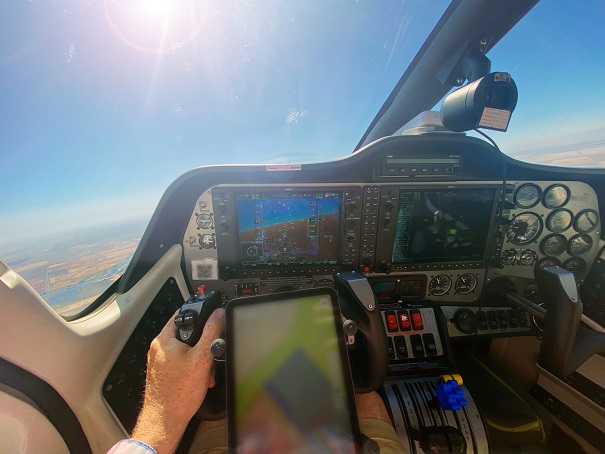Solar farms in Italy are being checked with aeroplane mounted sensors linked to DAQ software
During 2022, Europe added a record 41 gigawatts of solar power to its energy mix, which is representing a serious challenge to wind energy as a primary source of clean electricity on the continent. With tens of millions more people relying on solar power annually, ensuring that the solar panels are maintained in good operating condition is becoming increasingly important.
As a result, Inspection software specialist, Zeitview is currently expanding its solar inspection services in Eureope using its AI-enabled advanced energy and infrastructure inspection software mounted on crewed aircraft following designated flight paths to survey, inspect and analyse solar farm assets.
Using high-resolution millimeter-wave infrared cameras, Zeitview can collect quality data at scale to help power plants optimise maintenance and file warranty claims. Before moving on to Europe, the company had used this method to provide highly efficient inspections of utility-scale solar arrays in the United States. Zeitview is starting its scanning operations in Italy this summer, with long-term plans to inspect 1 MW and larger solar power plants throughout the region.
According to Mark Culpepper, the general manager of global solar solutions at Zeitview, to achieve climate goals in the region, a lot more solar power plants need to be brought online and kept running at peak efficiency.
“The industry suffers from a noticeable lack of transparency and clarity regarding the objective health of solar assets overall. Our efficient and scalable aerial inspections gather comprehensive data sets that bring a universal and standardised assessment to the real-life conditions of solar assets.”
Acquisition of Inspection Data
Zeitview uses aerial sensors mounted on aeroplanes to deliver reliable thermal and RGB views (or truecolor images) of solar power plants. The company’s Solar Insights software uses data acquisition, artificial Intelligence, machine learning and data analytics to assess equipment condition and prioritise maintenance and repairs. Once an inspection is completed, users can access the asset data, imagery and reports via the Solar Insights platform to maintain a global view of each system’s financial performance and energy output through targeted maintenance and preventable downtime. Using aircraft enables Zeitview technicians to inspect 2 GW or more of power daily, creating an economy of scale unmatched by other imaging technologies.
Dan Burton, CEO at Zeitview believes that investors and site owners want to maximise the solar energy production of their projects, and that aerial inspections are essential to achieving this goal.
“A defect in a single module can significantly affect the performance of an entire string, so knowing the health of each module helps asset owners optimise output and accelerates the clean energy transition for all of us. We are thrilled to launch a cost-effective coordinated effort in Europe, allowing greater access to the data that benefits not only asset owners but also the solar industry,” he says.
Condition Rating
Zeitview solar asset reports are designed to provide a standard for evaluating the total condition of solar power plants. Zeitview uses a simple three-letter rating system, each representing a specific aspect of the site’s overall condition. The first letter in the rating represents the operating condition of the site, including locating failing components to estimate the power plant’s direct current losses. The second letter in the rating indicates the highest recorded temperature of photovoltaic cells, with separate parameters for roof-mounted and ground-mounted assets, as elevated temperatures may indicate potential safety or liability risks. Finally, the last letter reflects the modules’ condition by comparing the number of anomalies per megawatt peak, as more anomalies per megawatt generally indicate more potential problems with the modules.
- UK manufacturing steps up to COVID-19 crisis - April 2, 2020
- Clustering Innovation - March 12, 2020
- A Global Monitor - March 6, 2020

